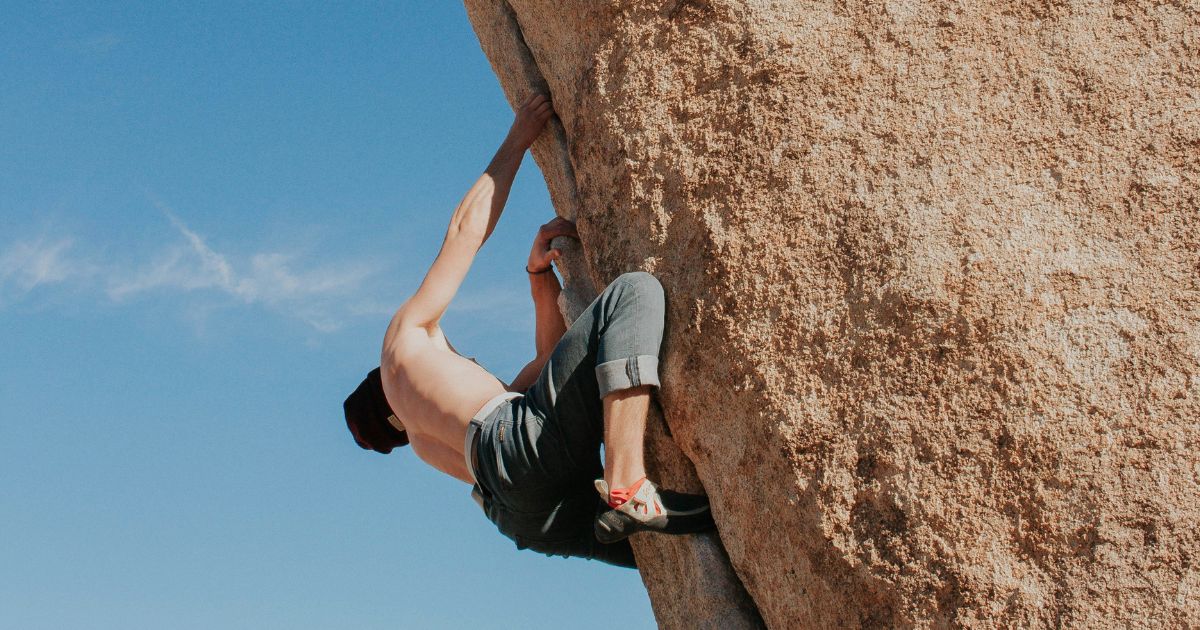Table of Contents
Learn How To Mantle: Climbing Technique
How To Mantle (Climbing Technique)? We will discuss the crucial mantling technique. Whether you’re preparing for outdoor activities or are an avid gym goer, mastering the art of mantling is essential. This guide will take you through the fundamental mantling cues, techniques, and common blunders. Let’s now examine the subtleties of this climbing technique and enhance your climbing abilities.
What Is Mantle Climbing?
Mantle climbing is a technique where the climber pulls themselves up onto a ledge or overhang with their hands and arms. A mantle move must be executed with a combination of strength, balance, and technique. To get over obstacles and carry on with their ascent, climbers frequently utilize their legs to propel themselves upward while gripping and pulling with their hands. This method adds a thrilling and difficult component to bouldering and traditional rock climbing. It is frequently employed in these sports.
Is Mantling Dangerous?
If handled incorrectly, mantling can be hazardous. To prevent injuries, you need to have the right balance, strength, and technique. To ensure safety, it’s crucial to have the right tools and to be trained in safe mantling methods.
The Basics of Mantling
The distribution of gravity and the center of weight are crucial components of the subtle art of mantling. The heel must be placed strategically to shift body weight efficiently during proper execution. As a result, the hands are then free to position themselves optimally for the next stages of mantling.
1. Heel Placement for Weight Distribution
Emphasize the importance of elevating the heel when mantling. Climbers can shift most of their body weight onto the raised side by using this tactical move. This is significant because it follows the idea of making effective use of the center of gravity.
2. Transitioning to the Press
The press is an essential next step after shifting the weight. Press upward using your main muscle groups, especially your triceps. The objective is to carefully position oneself for the next move rather than tossing oneself over the wall.
3. Hip Flexibility and Positioning
Sustaining hip flexibility and alignment is essential for mantling. Aim to keep your hips close to the wall and open. This is consistent with the more general climbing principle that you should maintain your center of mass close to the wall to facilitate weight shifting and ideal hand placement.
Pitfalls and Learning from Mistakes
In climbing, analysis of mistakes is often the source of learning. The video offers a useful illustration of what occurs when the foot isn’t used to effectively shift the center of gravity. The incident highlights how crucial it is to use the heel correctly to distribute weight properly.
1. Importance of Heel Usage
the significance of distributing weight properly by using the heel rather than the toe. Failing to do so may result in difficulties and ineffectiveness.
2. Learning from Personal Experience
Even seasoned climbers encounter difficulties. This teaches us how important it is to stick to basic techniques for easier climbs.
Practical Applications and Exercises
After going over the principles and learning from our mistakes, let’s talk about real-world uses and exercises to improve mantling abilities.
1. Practice on Jug Holds
Even the moves that seem simple, like jug holds, require practice, as some mantles are quite difficult. Concentrate on honing your method to guarantee execution efficiency and develop muscle memory.
2. Simulate Climbing Environments
For those who want to take on outdoor obstacles, model the exact climbing conditions you expect. Adjust your drills to the anticipated movements and circumstances.
In summary
Climbers at all levels need to learn how to use the mantle. Climbing becomes more enjoyable when you know how to distribute weight properly, use your heels correctly, and keep your hips flexible. To improve your mantling skills, keep in mind the basic techniques, learn from your mistakes, and practice often. So get ready, work out, and improve your climbing.
Related Posts
- 5 Common Mistakes to Avoid When Flagging
- How to Flag: A Climbing Technique for Developing Balance
- 7 Best Climbing Skin Care Balms and Creams
- Fingerboarding for beginner climbers
- How to get stronger fingers for climbing?
- Foot placement for climbing beginners
- Training Drills Every Climber Should Do
- The 7 Essential Movements of Bouldering
- The 5 Fundamentals of Climbing You Need to Know
- How to Flag: A Climbing Technique for Developing Balance
- How To Improve Your Climbing Footwork? – 4 key Stages
- 8 Essential Tips for Outdoor Rock Climbing Beginners
- 7 Techniques Every Climber Must Know










Discussion about this post